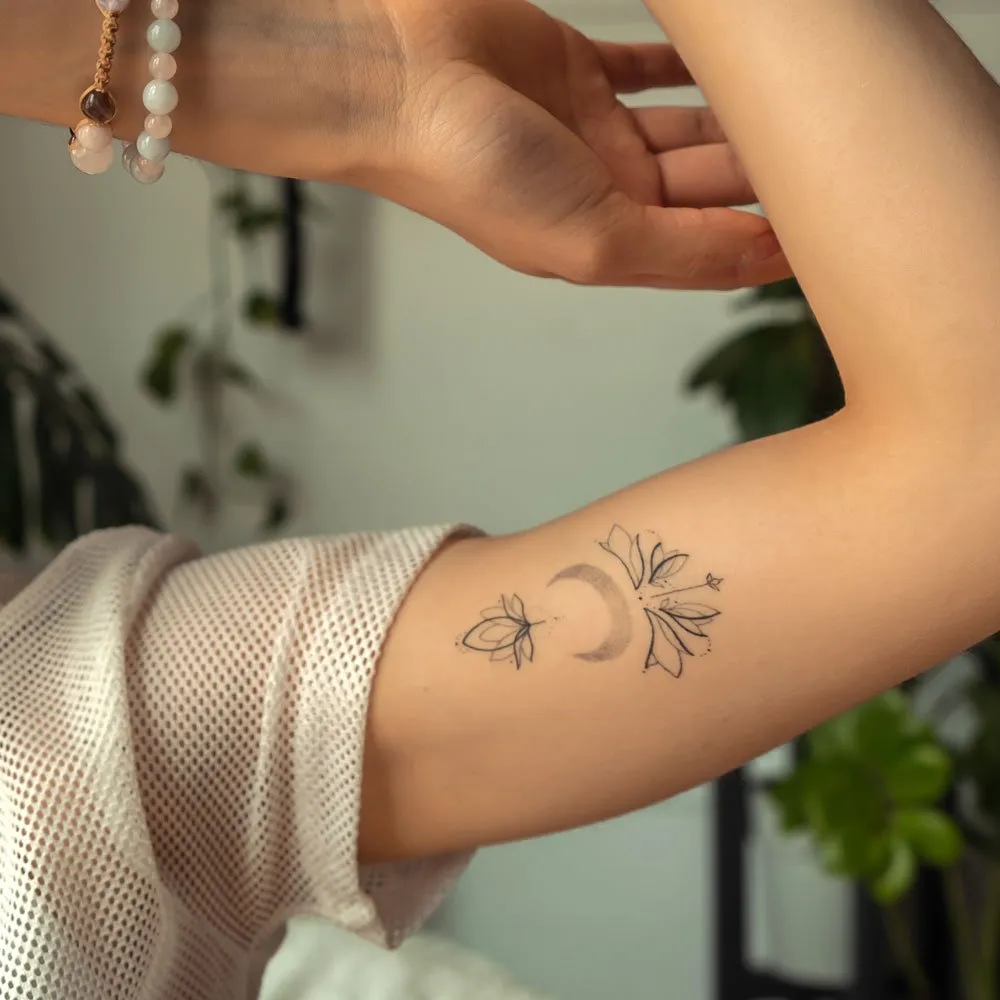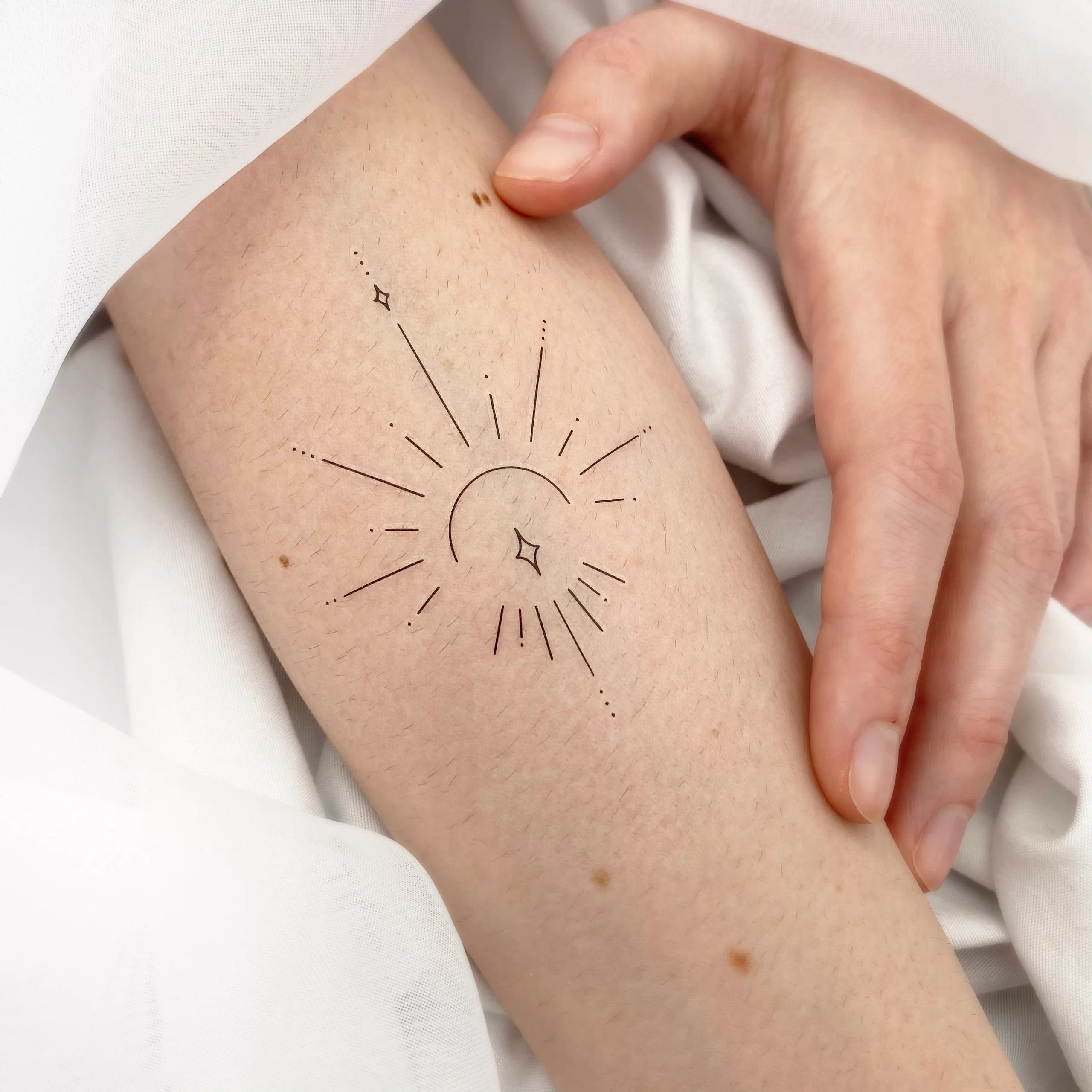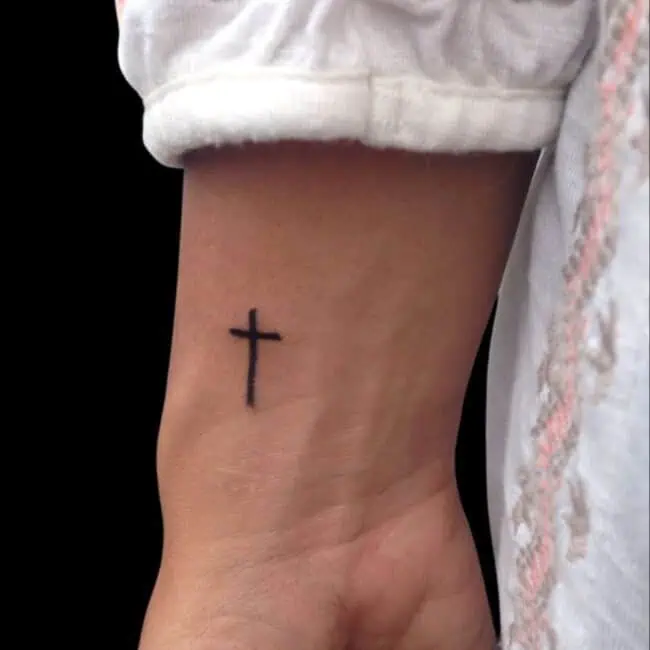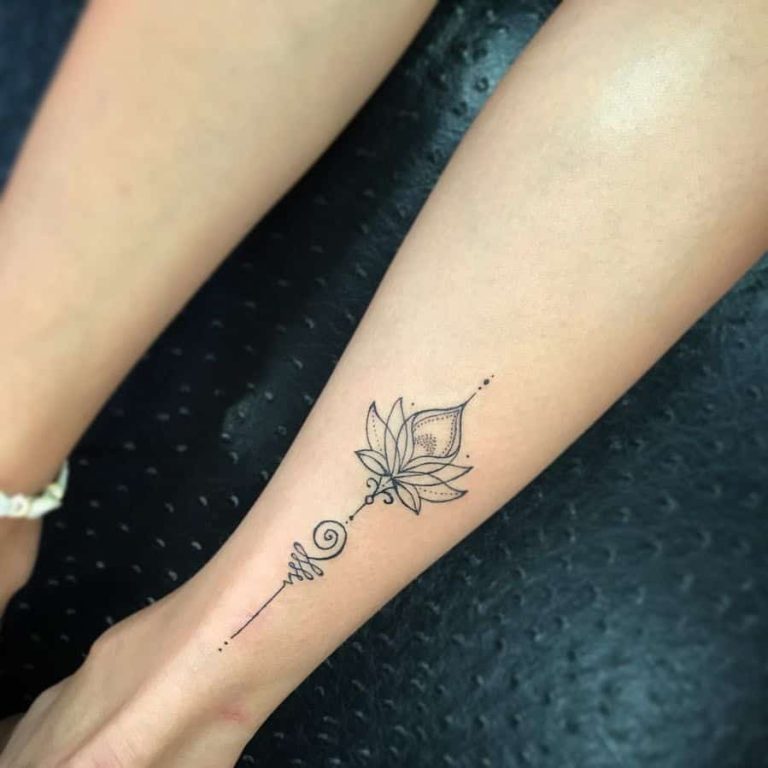
The Rise of Fine Line Tattoo: Subtle Ink Artistry
The Rise of Fine Line Tattoos
Fine line tattoo have surged in popularity. Why? Their subtle, delicate nature appeals to those seeking a more nuanced form of body art. This style is far from new; fine line tattooing has roots in the 1970s, embraced by artists and enthusiasts seeking precision and finesse in their designs. Today, it’s hitting the mainstream. It is all about crisp edges and detailed work that looks like it’s been drawn by a fine pen. This has caught the eye of celebrities and influencers, further fueling its rise. They have become a staple in modern tattoo studios across the globe, delivering personalized art without the heaviness of traditional bold lines.
The versatility of fine line tattoos means they can fit nearly any aesthetic or desire, contributing to their growing presence on arms, ankles, and everywhere in between. With less pain involved due to thinner needles and less ink, these tattoos attract a wide array of first-timers and tattoo veterans alike. As more people seek out tattoos that are both meaningful and minimalist, the trend of fine line tattooing shows no signs of slowing down.

Defining Characteristics of Fine Line Ink
The allure of fine line tattoos lies in their distinct qualities. First, the needlework is precise. Artists use needles that are thinner than those in traditional tattooing. This allows for intricate and precise designs that mimic the look of fine pen on paper. The artistry in fine line tattoo is often complex, yet maintains a delicate appearance. Second, shading and dot work come into play to create depth and texture without heavy or bold lines.
Fine line tattoos often have a more natural and subtle look. They lack the boldness of traditional tattoos and instead focus on fine details and gentle shading. This makes them ideal for designs that require fine shading, such as portraits or botanicals. Another characteristic is the use of single needle technique. This technique not only provides a finer line but also means less trauma to the skin. As a result, people often report less pain during the tattooing process.
Lastly, fine line tattoos can age gracefully. With a skilled artist, the lines stay crisp and distinct over time, resisting the spread that can occur with thicker-lined tattoos. Due to their subtlety, they can remain as elegant and discreet over the years, suiting both personal evolution and changes in fashion. This longevity adds to their appeal for those seeking a tattoo that remains relevant and classy.
In summary, fine line tattoo distinctiveness comes from precision needlework, subtle shading, single needle technique, and an ability to age well. They offer an elegant and sophisticated choice for personal body art.

Selection of Designs for Fine Line Tattoos
Choosing the right design is crucial for a fine line tattoo’s success. Simplicity is key. Look for motifs that translate well into fine lines and delicate details. Popular choices include floral patterns, minimalist symbols, and abstract art. These designs capture the essence of fine line work with their clean and subtle appeal.
- Floral Designs: Flowers are a timeless choice. They work beautifully with fine lines that bring out each petal’s grace and each leaf’s intricate texture.
- Animals and Birds: Fine lines can render the delicate features of animals and birds with stunning accuracy. Think of the gentle curve of a swan’s neck or the soft fur of a cat.
- Abstract Shapes: Geometric forms and abstract shapes lend themselves well to fine line tattoos. They offer a modern touch and simplicity that ages well.
- Wordmark or Phrases: Fine line tattoo is perfect for wordmarks or short phrases. The thin lines make script tattoos elegant and legible.
Fine line tattoos allow for personal expression in a subtle, stylish way. They are especially suitable for those wanting their ink to blend seamlessly with their everyday aesthetic. It’s important to discuss your ideas with an experienced artist. They can advise on the designs that will work well with the fine line style and offer a customized piece that’s perfect for you.
Best Placement Ideas for Fine Line Tattoos
When planning for a fine line tattoo, deciding where to place it on the body is important. The perfect spot can enhance the tattoo’s beauty and allow it to age well. Here are some of the best placement ideas:
- Wrists: Fine line tattoos look stunning on the wrist. They are visible when you want and easy to cover if needed.
- Ankles: Ankle tattoos are discreet and can be shown off with the right footwear.
- Behind the Ear: This spot is perfect for small, subtle designs and offers an element of surprise.
- Fingers: Fine line work can produce detailed and delicate designs, making fingers an excellent canvas.
- Forearm: The forearm provides a flat, even space that’s ideal for longer, elegant designs.
- Upper Back: A large canvas for more intricate fine line designs that require more space.
- Collarbone: Fine lines can highlight the collarbone area, giving a touch of sophistication.
Each area offers its unique visibility and can affect the experience of getting and living with a fine line tattoo. Discuss these options with your tattoo artist to find the placement that best fits your design and personal style.

The Process of Getting a Fine Line Tattoo
The journey to acquiring a fine line tattoo involves several key steps. Initially, research is essential. Look for artists who specialize in fine line tattooing. Study their portfolios to find a style that resonates with you.
Once you’ve chosen an artist, schedule a consultation. This face-to-face meeting allows you to discuss your design, get advice, and understand the artist’s approach. Bring references or ideas to help the artist grasp what you’re looking for.
During the consultation, also talk about placement. The artist will provide insights into how the tattoo will look in different areas and how it may feel during the tattooing process.
After agreeing on the design and location, an appointment is set. On that day, make sure to arrive rested and hydrated. The artist will prepare the skin, ensuring it’s clean and ready for inking.
The actual tattoing starts with the artist transferring a stencil of your design onto the chosen spot. With meticulous care, they use a single needle or a very thin needle grouping to create your tattoo’s fine lines.
The process can take more or less time depending on the complexity and size of the tattoo. Throughout, the artist will focus on precision, often taking breaks to reduce skin stress.
Communication is key, so let the artist know if you need a pause. Remember, fine line tattoos generally cause less pain compared to traditional tattoos due to the thin needles and delicate inking method.
Once completed, you’ll get instructions for aftercare. Caring for your fine line tattoo is crucial for its longevity and freshness.
Every step of this process is critical to ensure your fine line tattoo looks stunning and stands the test of time. Trust in your artist’s expertise and your own preparation for the best results.

Healing and Aftercare for Fine Line Tattoos
After getting a fine line tattoo, proper healing and aftercare are vital. They ensure your tattoo looks sharp for years. Here’s a concise guide to help with your tattoo’s aftercare:
- Keep it Clean: First, gently wash your new tattoo. Use mild soap and lukewarm water. Do this 2-3 times a day.
- Pat it Dry: Always pat the tattoo dry with a soft cloth. Avoid rubbing as it can irritate the skin.
- Moisturize: Apply a thin layer of fragrance-free moisturizer. This keeps the skin supple and helps healing.
- Avoid Sun: Keep your tattoo out of direct sunlight. Sun can fade the ink and slow healing.
- Wear Loose Clothing: Choose clothes that don’t rub against your tattoo. Friction can damage the fine lines.
- Don’t Soak: Skip swimming and long baths for the first few weeks. Water can cause ink to leach.
- No Picking: If scabs form, don’t pick at them. Picking can lead to ink loss and scarring.
- Stay Hydrated: Drink plenty of water. Hydration is good for your skin and helps the healing process.
In addition to these tips, follow any specific advice from your tattoo artist. They know your skin and how it reacts. Healing times vary, but fine line tattoos usually heal in 2-4 weeks. If you see signs of infection, such as excessive redness, swelling, or pus, contact a healthcare provider quickly.
Regular aftercare ensures your fine line tattoo remains a subtle yet striking piece of body art. Stick to the aftercare routine diligently, and watch your ink preserve its delicate beauty over time.
Popular Artists Specializing in Fine Line Work
When seeking a fine line tattoo, choosing an artist with a proven track record is key. Artists specializing in this style offer an array of unique designs, personalized approaches, and consistent quality. Internationally, there are several renowned tattooists known for their fine line work.
- Dr. Woo: Based in Los Angeles, Dr. Woo is known for his single-needle fine line tattoos. Celebrities and influencers often seek out his precise and intricate designs.
- JonBoy: Operating out of New York City, JonBoy is famous for his minimalist tattoos and has a large following for his clean fine line work.
- Mo Ganji: Based in Berlin, Mo Ganji’s continuous one-line tattoos are distinctive and easily recognizable, offering a unique take on fine line artistry.
- Bang Bang: His studio in NYC has a reputation for fine line tattoos and has attracted a client list that includes high-profile names.
These artists share a commitment to meticulousness and a love for detail that fine line tattooing demands. They have mastered the ability to produce smooth, nuanced tattoos that celebrate the essence of this delicate art style.
When choosing an artist, consider their portfolio, style, and the type of designs they specialize in. It’s worth traveling for an artist who can turn your vision into finely executed ink. Discussing your concept with them will help gauge if their artistic vision aligns with your expectations.
Remember, the popularity of artists can result in long waiting lists, so patience is crucial. Booking in advance ensures you get the timeless and sophisticated fine line tattoo you desire from a top-tier artist.

Considerations Before Getting a Fine Line Tattoo
Before deciding on a fine line tattoo, there are important factors to weigh. Here are some key considerations:
- Do Your Research: Look for tattoo parlors and artists who specialize in fine line work. Read reviews and look at their past artwork to ensure their style aligns with what you want.
- Design Clarity: Choose a design that translates well into fine lines. Complex or overly detailed images might not render as expected in this style.
- Placement Permanence: Remember that a tattoo, once inked, is permanent. Choose a spot on your body where the tattoo will age well and can be displayed or hidden as you wish.
- Pain Factor: Fine line tattoos are often less painful than traditional tattoos with thicker needles, but some body areas can still be more sensitive than others. Be honest with yourself about how much discomfort you can tolerate.
- Aftercare Commitment: After getting your tattoo, proper aftercare is crucial. Understand what is required to keep the tattoo looking sharp, and commit to the care regime.
- Artist Availability: Fine line specialists might have long waitlists. Be prepared to wait for an appointment with a popular artist.
- Budget: Fine line tattoos can be costly due to the skill involved. Ensure you have budgeted appropriately for both the tattoo and the potential for touch-ups down the line.
- Healing Time: Consider the healing time needed for a fine line tattoo. You may need to adjust your activities to avoid disturbing the tattoo area.
Taking these points into account will help you make an informed decision about whether a fine line tattoo is right for you. Think through each aspect thoroughly before taking the leap into the world of fine line ink.

